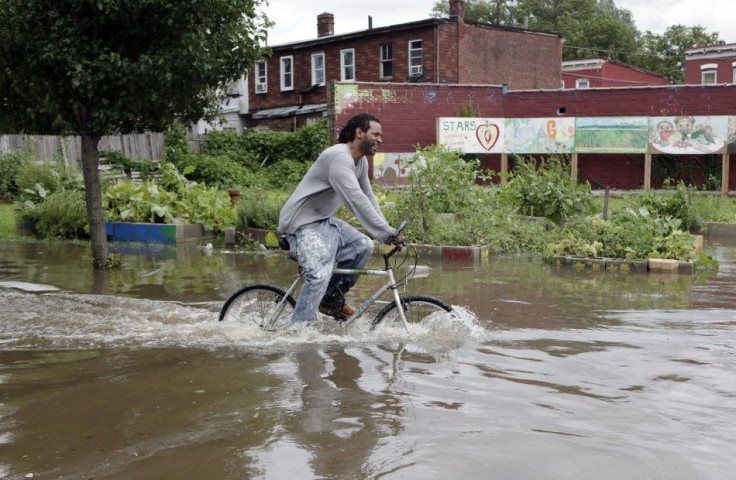New Jersey Flooding Devastating After Hurricane Irene

Extensive flooding remained in some parts of New Jersey on Tuesday in the aftermath of Hurricane Irene. Passaic County in the northern part of the state and Mercer and Middlesex Counties in the central part were particularly hard-hit, with some streets under several feet of water.
Little Falls, Pompton Lakes and Wayne, all in Passaic County, are susceptible to flooding even in relatively minor storms because of their locations along four major rivers: the Passaic, the Pequannock, the Pompton and the Ramapo. As such, the local governments are well practiced in responding to floods, but the effects of Hurricane Irene were unusually severe, with record crests in some places. The Passaic River peaked at 14 feet, twice the height needed for a flood, according to The Record.
Cars were completely submerged and some houses flooded up to their roofs. Parts of Willowbrook Mall in Wayne were underwater, and the mall remained closed on Tuesday -- not that anyone could have gotten there through the flooded streets even if it had been open. Property damage, both to homes and to the furniture and valuables inside them, was catastrophic. Dave Anders, a longtime resident of Pompton Lakes, told CBS News that the flooding was the worst he had seen in 50 years.
Paterson, the third largest city in New Jersey, was also seriously affected, and parts of Bergen County saw flooding as well. Statewide, at least six people died as a result of the storm, and more than 250,000 homes and businesses remained without power on Tuesday.
Central New Jersey suffered major flooding from the Raritan River. New Jersey Transit restored service on most train lines on Tuesday, but the Northeast Corridor Line between New Brunswick and Trenton and the Amtrak line to Philadelphia remained suspended because of flooding in the Trenton station. Part of the Princeton Junction station was also underwater.
In addition to inundating homes and making streets impassable, the flooding created serious electrical hazards from downed and wet power lines. One house in Pompton Lakes exploded on Monday, possibly because of natural gas, but fortunately no one was inside at the time, CBS News reported.
The flooding was compounded because New Jersey has seen a lot of rain in August, and the ground was saturated in many places even before the hurricane hit. Rainfall from Irene was between 5 and 10 inches throughout the state.
David Robinson, the state climatologist, told Bloomberg Businessweek that Irene was on par with Hurricane Floyd in 1999, the Ash Wednesday Nor'easter of 1962 and the Great Atlantic Hurricane of 1944 in terms of the damage done in New Jersey. He said the flooding was as bad as that from Tropical Storm Doria in August 1971, and second only to the Great Flood of October 1903.
© Copyright IBTimes 2024. All rights reserved.





















